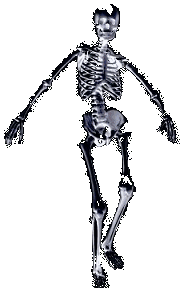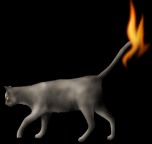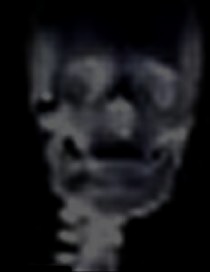


A little history for you, dahlinks.....
All Hallow's Eve, October 31, is the eve of All Saints' Day. Although Halloween
means "holy" or "hallowed" evening, the evening preceding all Saints' Day
was actually a pagan celebration. It began in the 7th or 8th century after
the spread of Christianity when saints were honored on All Saints' Day. The
original Druidic holiday, Samhain, began many hundreds of years before the
birth of Jesus. Enemies of the church made fun of Christians by worshipping
the devil on Halloween.
The Druids (members of a Celtic religious order) celebrated their New Year's
Eve on October 31. They believed in the supernatural and tried to placate
the Lord of Death. They lit bonfires to honor the sun god and frighten away
evil spirits. The Druids also believed that witches rode on broomsticks and
that ghosts caused supernatural happenings.
The custom of celebrating Halloween was brought to the New World by Gaelic
immigrants. Today's celebration follows ancient customs involving a combination
of Druid practices and other religious beliefs. The Jack-o-Lantern originated
with an Irishman named Jack who loved to play pranks on the Devil. Legend
is that he was made to wander the world carrying a lantern to show him the
way, going to neither heaven nor hell. Hollowed out pumpkins with candles
lighted inside were supposed to scare evil spirits away. "Trick-or-treating"
was initiated by the Irish when farmers would go from house to house to collect
food for the village.
Today, Halloween has become a multi-million dollar costume business. Generally,
on this children's holiday, children dress up and go from house to house
for candy. Harmless pranks are pulled on neighbors or friends. Many communities
are now hosting structured activities or parties in order to keep pranks
from turning into destructive outings.
















![]()

![]() Midi courtesy of:
Jim's Midi Links
Midi courtesy of:
Jim's Midi Links![]()
![]()
![]()